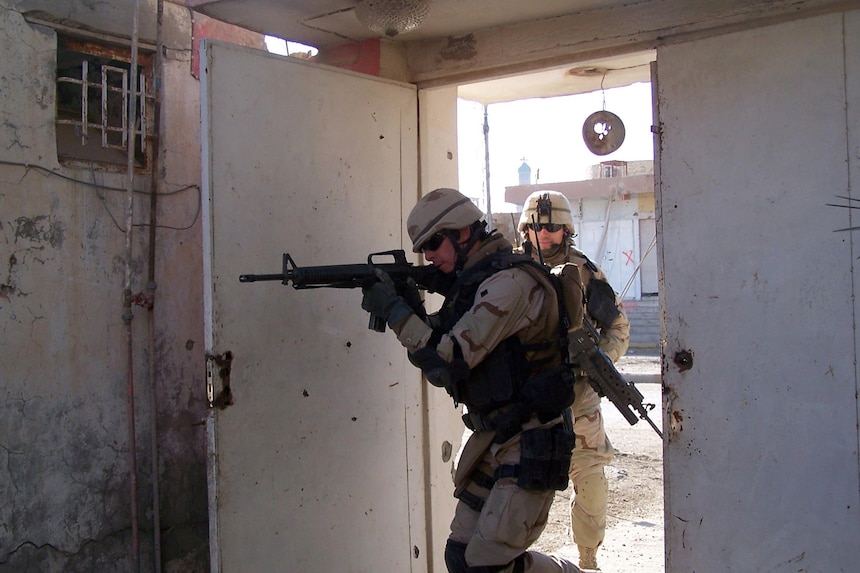Consolidated by U.S. Navy Seabee Museum, Naval History and Heritage Command
December 11
1966: Main body of Naval Mobile Construction Battalion (NMCB) 7 arrived in Davisville, Rhode Island from Phu Bai, Republic of Vietnam (RVN).
1967: Cmdr. Ward W. DeGroot III, commanding officer of NMCB 58 relieved Cmdr. Paul R. Gates, commanding officer of NMCB 1 at Camp Haskins, North, RVN.
December 12
1942: 55th Naval Construction Battalion (NCB) commissioned at Camp Endicott, Davisville, Rhode Island.

December 13
1945: 130th NCB inactivation completed on Okinawa, Japan.
1963: Opening ceremonies were held for a 6,000-foot military airfield located at Nakhon Phanom in northeast Thailand. The airfield was near the Mekong River which divides Thailand and Laos. The construction of this airfield was the first major project undertaken by the Seabees in Southeast Asia. The men of NMCB 3 began the project, which included the clearing of 235 acres of heavy monsoon forest, in August 1962.
1966: Four personnel of NMCB 8 were wounded in an enemy mining and booby trap incident, approximately 10 miles south of Chu Lai, RVN on Route No. 1. Two men were wounded when the five ton wrecker in which they were riding was blown up by a command detonated mine. Two other NMCB 8 personnel were wounded at the scene when a Vietnamese detonated a booby trap believed to be a fragmentation grenade. All four casualties were air evacuated to the First Medical Battalion Hospital in Chu Lai, and were stabilized in good condition.
December 14
1942: ACORN 6 commissioned. (In World War II, Navy ACORN units, composed of Seabees and other components such as aircraft maintenance units, etc., were put together to design, construct, operate and maintain forward landplane and seaplane bases and operational facilities.)
1945: The Construction Battalion Center (CBC) Port Hueneme, California, consisting of the U.S. Naval Advance Base Depot and the U.S. Naval Training and Distribution Center, was established as the center for Seabee activity in the postwar Navy.
1956: Chief Builder Charles A. Bevilacqua erects a 15-foot tall, orange-and-black striped bamboo pole, topped with a 16-inch mirrored glass ball atop the newly completed garage at the Amundsen-Scott South Pole Station. This ceremonial South Pole is still in use today.
1967: Detail Foxtrot of NMCB 5 came under enemy fire while deployed at site A-3, RVN. The resultant enemy action resulted in Builder (Heavy) Constructionman Roger E. Huestis being killed in action, and Builder (Concrete) 2nd Class Wiliam D. Thompson wounded in action. Thompson later died as a result of wounds received in this action on December 15, 1967.
1969: Seabee Teams 0810 and 0811 deployed from Vietnam to CBC Port Hueneme, California.
December 15
1942: When the Seabees were first established, the United States Navy recruited skilled construction workers and taught them how to use advanced base equipment and how to fight. Because they were skilled in their trades, the men were offered petty officer rates based on their experience and their age. However, on December 15, 1942, direct voluntary enlistment in the Seabees was ended in compliance with a Presidential Order requiring all the military services to obtain their manpower through Selective Service. By that time, about 60 battalions had been assembled.
1942: ACORN 2 arrived at Espiritu Santo, Vanuatu; 48th NCB commissioned at Camp Peary, Magruder, Virginia.

1944: One of the heroes of the World War II was Seabee Machinist Mate 3rd Class Malcolm Peppo of the 113th NCB. While unloading stores from an LST during the assault on Mindanao, Philippine Islands, Peppo s ship was attacked by a Japanese kamikaze plane. Because the ship was being unloaded, its bow doors were open and its ramp was down, making it helpless to maneuver. When the anti-aircraft gun crew looked up and saw the suicide plane headed straight for the beached vessel, the men instinctively abandoned their positions and scattered. Peppo, however, jumped into the vacated gun emplacement and fired at the oncoming plane until it crashed. For his courageous actions, Peppo was awarded the Silver Star.
1945: 8th Naval Construction Brigade inactivated; 52nd Naval Construction Regiment (NCR) inactivated; 71st NCB inactivated on Okinawa, Japan.
1967: Seabee Team 0309 returned to the main body at Camp Wilkinson. (Camp Wilkinson was the Seabee camp at the Gia Le Combat Base near Phu Bai, RVN.
1969: Construction Battalion Unit (CBU) 401 was established at the Public Works Center, Great Lakes, Illinois. It was a pilot unit in the Seabees Ashore Program and was to provide assistance to all United States Navy activities at Great Lakes in their self-help efforts. Depending on the size and complexity of projects assigned, it provided skilled supervisions of non-Seabee ratings, Seabee equipment, and its own manpower to enhance living spaces and expand and improve recreational facilities.
December 16
1942: 1st Special NCB commissioned at Naval Construction Training Center (NCTC) Camp Bradford, Norfolk, Virginia.
1943: ACORN 11 dissolved.
1967: Seabee Team 0407 arrived in the continental U.S. (CONUS) following successful deployment to Can Tho, RVN.
1970: Cmdr. Roy D. Gaulden was relieved as commanding officer of NCMB 4 by Cmdr. J.A. Ruscyk.
1970: Camp Kinser, Okinawa was officially rededicated as Camp Marvin G. Shields, in honor of Seabee Medal of Honor winner Construction Mechanic 3rd Class Marvin G. Shields. Rear Admiral S.R. Smith presided over the ceremony. Honored guests included Mrs. Virginia Castellery, petty officer Shields mother, and Brig. Gen. R.H. Barrow, commanding general of USMC Base Camp Smedley D. Butler, Okinawa.
